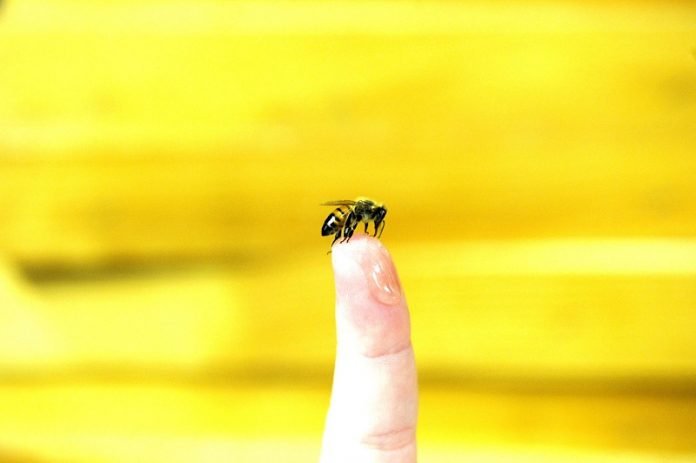
Fans of the fictional romance series “Bridgerton” were in for a tragedy at the beginning of Season 2. (Warning: This post contains spoilers.)
The Emmy-nominated Netflix series featured a flashback wherein Edmund Bridgerton, patriarch of the titular family, dies suddenly after getting stung by a bee.
The scene sets up the backstory for one of this season’s main story arcs involving Anthony Bridgerton, Edmund’s oldest son, and, after his father’s death-by-bee-sting, the de facto head of the family.
But how realistic was it?
Can a bee sting really kill someone in about a minute?
“That sounds really fast, but it can happen that quickly in some people,” says Robert M. Baginski, assistant clinical professor and director of interdisciplinary affairs in the Bouvé College of Health Sciences at Northeastern. “Usually anaphylaxis comes on between 20 minutes and up to two hours after the exposure to an antigen.”
It would seem that Edmund Bridgerton experienced a severe allergic reaction—called anaphylaxis—to the bee sting, though the medical community of England’s early-19th century Regency era wouldn’t have known to diagnose it as such.
Though the phenomenon of anaphylaxis had been described earlier, the seminal experiments weren’t reported until nearly 100 years later, in 1902.
Anaphylaxis, Baginski explains, is a medical event during which the immune system overreacts to an antigen—in Bridgerton’s case, a bee sting—to the extent that it initiates an over-the-top response to the invading antigen.
This severe, life-threatening reaction is at the far end of a spectrum of allergy symptoms that people may experience, he says. People who go into anaphylaxis may experience a warm, tingly feeling in their hands, feet, face, and/or throat; and swelling of the lips, tongue, and upper and lower airways, which can cause wheezing and difficulty breathing, changes in pulse and heart rate, dizziness, or fainting.
Ultimately, if left untreated, anaphylaxis can be fatal.
In most cases, someone who will have such a severe allergic reaction will have been exposed to the allergen at least once before, Baginski says. “The body needs to be introduced to the allergen first, before it can overreact the next time,” he says.
Nowadays, people who have severe allergic reactions usually know that they are vulnerable to certain allergens.
People can be prepared for such an event by carrying an epinephrine auto-injector, more commonly known as an EpiPen, to treat severe allergic reactions in emergency situations. Incidentally, the lifesaving devices were invented by Sheldon Kaplan, a Northeastern graduate who studied mechanical engineering.
“EpiPens are one of those things that you always have, but hope never to use,” says Stephen Clark, assistant clinical professor at Northeastern, and the performance rehabilitation director for the university’s student-athletes.
But the most important step to take, if someone is having an anaphylactic reaction, is to call 911, say Clark and Baginski.
Even if the person seems to have recovered, it’s essential that they receive professional medical attention, Baginski says, because there’s a risk they could experience “rebound anaphylaxis,” which is the delayed recurrence of severe symptoms.
“There’s a proper way and a proper location to give someone an EpiPen injection, and if you’re not trained in that technique, you shouldn’t do it,” Baginski says. “No matter what, you should call 911.”
Unfortunately for Edmund Bridgerton, telephones weren’t invented until the mid-1800s, and EpiPens weren’t available to the public until the 1980s. (Kaplan, who graduated from Northeastern in 1962, was inducted posthumously into the National Inventors Hall of Fame in 2016. He died of cancer in 2009.)
As for Anthony Bridgerton? Baginski says the propensity for allergies and asthma tend to run in families, although they can also occur in people who have no history or experience of them in the past. The young patriarch’s fate is still up in the air—literally, this spring.
Written by Molly Callahan.



